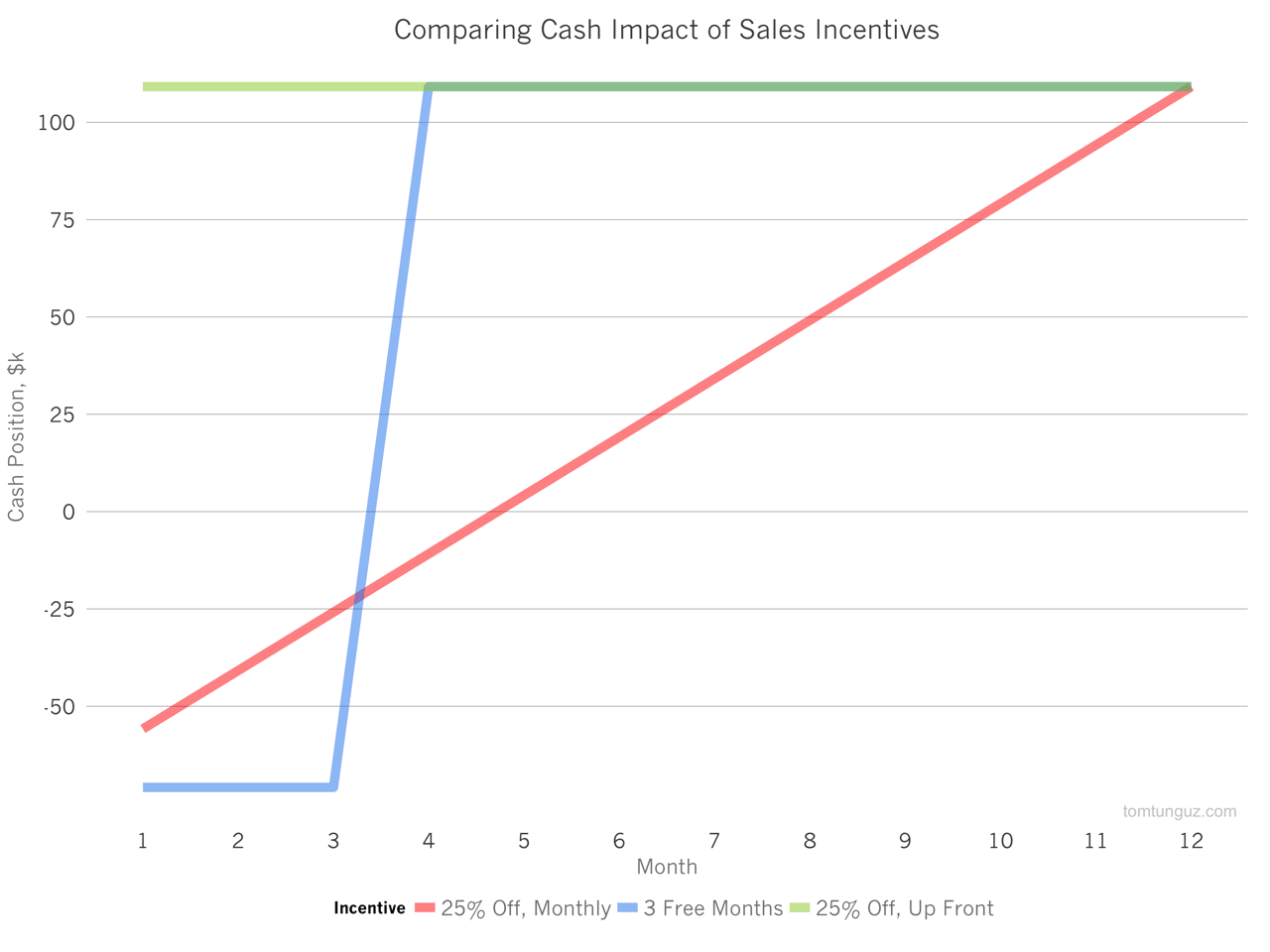3 minute read / May 26, 2015 /
The Risk Sales Discounts Impose to Startup Burn Rates
Creating a sense of urgency is one of the most powerful sales tools available to SaaS companies. There are many different ways of accomplishing this, but one of the most common ways is to offer discounts that expire. Discounts are powerful incentives to increase sales. But, they have to be crafted correctly, or they can have dramatic impact on a startup’s cash position. This is why sales incentives should be designed hand-in-hand with the company’s finance team. Imagine a hypothetical 20 person software company. Suppose this month is seasonally slow month, and the executive team decides to implement a 25% discount to accelerate sales. There are many ways of offering this discount to customers. Above, I have modeled three: a 25% reduction billed monthly, a 25% reduction billed upfront, and the first three months of the subscription are free.
Each of these options costs customers the same total amount over the course of 12 months. But, the cash position of the business is quite different for each because there is a difference in the timing of when commissions are paid (cash out) and when customers pay (cash in), which can cause a cash squeeze.
A few more relevant details behind a model. The company has five salespeople, and five sales development reps. The account executives have a quota of $720,000 per year, and the company charges its customers $25,000 per year. the account executives make $120k in on target earnings, split 50/50 between salary and commission. And the sales development reps earn $50k annually. I’m not including benefits in these calculations. In the case of the 25% off billed monthly, the company pays salary and commission in month one to the sales team of about $71k. Over the next 12 months, the customer pays a discounted monthly fee the company suffers a unit cash shortage through month five. In the case of the three free months then annual prepay, the company suffers a cash shortage through the first quarter of the contract and then receives a lump sum payment of $180,000 a month 4. In the last case, of a 25% discount with annual prepay, the company never suffers a cash shortfall. This is a really simple model intended to show the importance of understanding the timing of cash inflows from customers and cash outflows from sales commissions. In steady-state, most businesses maintain a stable balance between these two. But, when designing sales incentives in order to spur a slow month, it can be easy to forget the cash impact to the business of a particular promotion.
